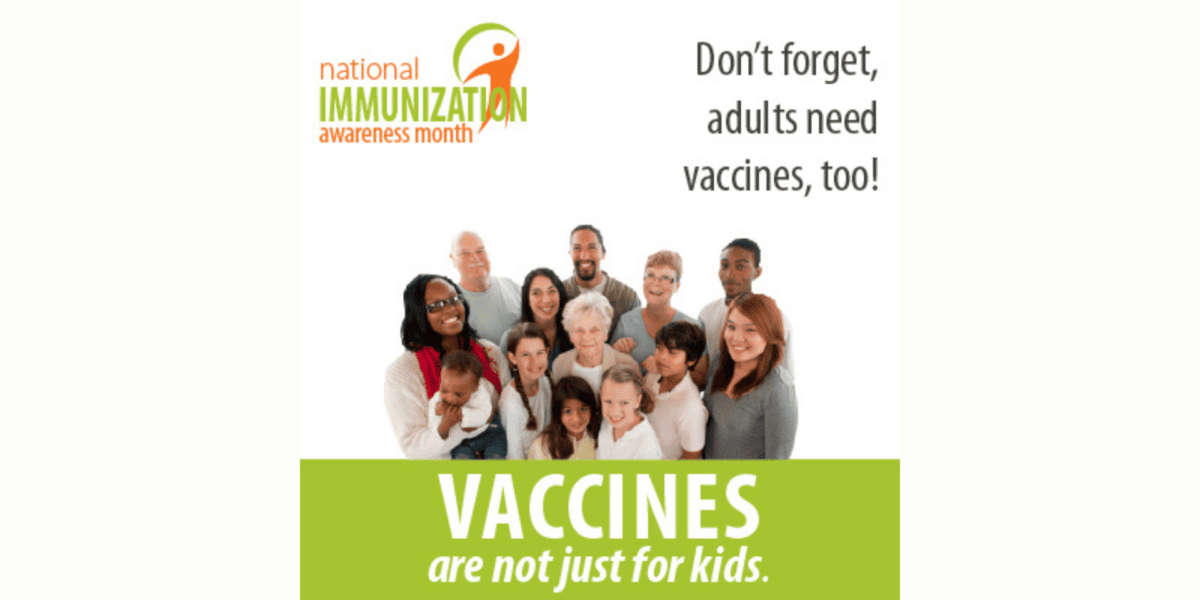
Special thanks to NFID Board Member and Clinical Vaccinology Course co-chair and faculty member, Patricia A. Stinchfield, RN, MS, CPNP, for sharing her experiences during the 2014-15 flu season.
For those of us who work on influenza year round, there is no flu “season,” but 2014 will be a flu season to remember. As a pediatric nurse practitioner in infectious disease and the director of The Children’s Immunization Project, an outreach and education arm of the Infection Prevention and Control department at Children’s Hospitals and Clinics of Minnesota, influenza is one of the diseases I think about and prepare for year round. I spend summers preparing our educators who go into schools and teach young children about the proper way to wash their hands, and cover their coughs and sneezes. We review marketing plans detailing where billboards should be placed and what flu prevention messages should be posted through social media.
Come fall, we are actively vaccinating countless clinic patients as well as all 6,000 of our employees and 2,000 professional staff, reaching over 90% immunization rates in the former and 100% in the latter for which we have won state and national awards. And when flu season arrives, we are busy communicating influenza surveillance findings to staff and keeping the public informed through media interviews. Additionally, in our daily safety call, the “Friday Viral Update,” I report which lab-confirmed influenza, RSV, and/or other viruses are circulating to all hospital leaders.
Like most children’s hospitals, Children’s of MN received a high number of infectious diseases cases this season. We saw high numbers of Enterovirus D68 cases in August and September, early and high levels of RSV, we planned non-stop for Ebola and measles, and were then hit hard with cases of influenza. Children’s of MN saw over 1,000 lab-confirmed cases of influenza (925 flu A, mostly H3N2, and 162 late season influenza B) and had 139 total admissions. The inpatient admissions were similar as in past years, but this year there were record shattering numbers of moderately ill children that were seen in clinics and emergency departments.
Sadly, four children died in our hospital of influenza this year, also a new record. They were toddlers to teens, healthy and with chronic conditions, and mostly unvaccinated.
As this remarkable season winds down, we know two major facts about why this year was particularly challenging: the strain of influenza that arrived in our communities had drifted from what was anticipated and put in the vaccine many months prior; the intranasal influenza vaccine had a heat sensitive H1N1 component to it that did not survive the hot summer and fall temperatures during shipping, rendering it ineffective.
This is discouraging news. But as I head back to my post as a member of the CDC influenza workgroup, and Board member of the National Foundation for Infectious Diseases (NFID), we will continue to strive for better, safer vaccines and ways to handle them and communicate about them. Here’s hoping for a calmer next “season.”
NFID has tools to help you prepare for the 2015-16 influenza season. Visit www.preventchildhoodinfluenza.org for resources including a free downloadable coloring book (in both English and Spanish), calendar of social media posts, resources to help you Keep Flu Out of School, and this fun public service announcement:
For updates on new tools and resources, subscribe to NFID Updates.
To join the conversation, follow Patricia Stinchfield (@InfectiousPS) and NFID on Twitter (@nfidvaccines), like us on Facebook, join the NFID Linkedin Group, and subscribe to NFID Updates.
Related Posts

Protecting Mother and Baby: Two Important Vaccines Needed During Pregnancy
A special thank you to Laura E. Riley, MD, Director, Labor and Delivery at Massachusetts General Hospital, and Associate Professor of Obstetrics, Gynecology and Reproductive…

Some Things Shouldn’t Be Shared
The month of August has been designated as National Immunization Awareness Month. As a partnering organization, the National Foundation for Infectious Diseases (NFID) is helping…

The Importance of Vaccinating Healthcare Professionals
A special thank you to NFID Director, Patricia A. Stinchfield, RN, MS, CPNP from the Children’s Hospital and Clinics of Minnesota for this interview on…
